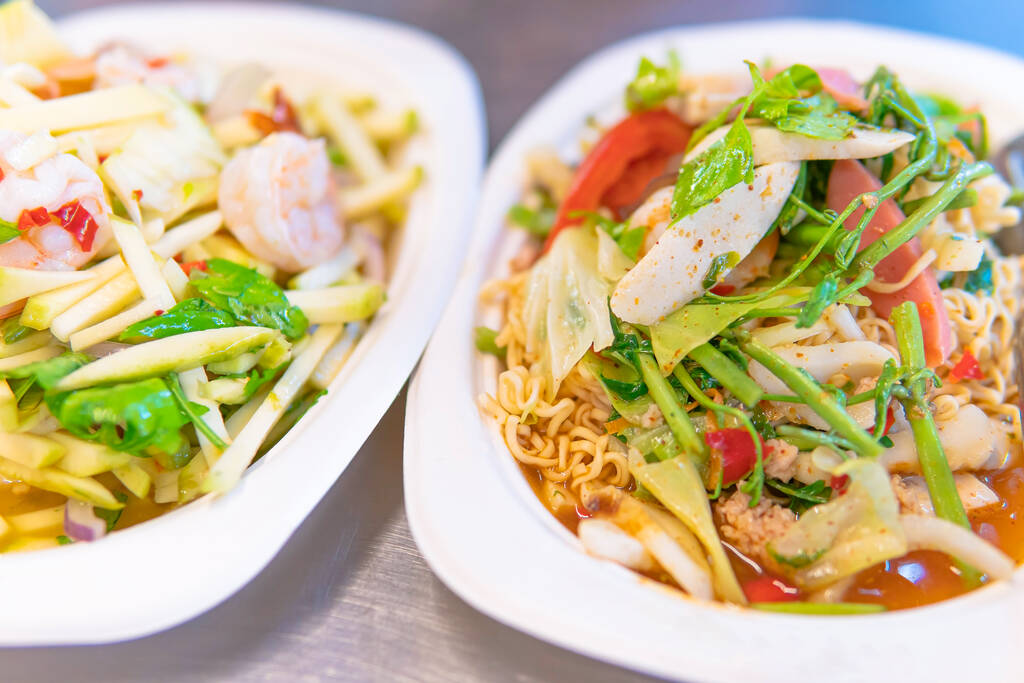Thai cuisine, known for its vibrant flavours and aromatic spices, is a delightful culinary tradition that can bring joy and nutritional benefits to any table. However, when it comes to serving Thai dishes to seniors, especially in aged care settings, certain dietary modifications may be necessary to meet their unique nutritional needs and dietary restrictions. In this blog, we will explore how to adapt traditional Thai recipes to create delicious and suitable meals for elderly individuals.
Understanding Senior Dietary Restrictions
As people age, their dietary needs and restrictions often change due to various health conditions, such as hypertension, diabetes, digestive issues, and dental problems. Common dietary considerations for seniors include:
Low Sodium: High blood pressure is prevalent among seniors, necessitating a diet low in sodium.
Low Sugar: Diabetes management requires careful monitoring of sugar intake.
Soft Foods: Dental problems and difficulties with chewing and swallowing necessitate softer food textures.
High Fibre: Adequate fibre intake is essential for digestive health.
Balanced Nutrients: Ensuring a balance of proteins, carbohydrates, and healthy fats is crucial for overall health.
Adapting Thai Cuisine for Seniors
By making thoughtful modifications to traditional Thai recipes, you can create meals that are both delicious and suitable for seniors. Here are some tips and recipe ideas to get started:
1. Reducing Sodium
Traditional Thai cuisine often relies on salty ingredients like fish sauce and soy sauce. To reduce sodium content:
Use Low-Sodium Alternatives: Opt for low-sodium soy sauce and fish sauce, or dilute regular versions with water.
Increase Herbs and Spices: Enhance flavour with fresh herbs like cilantro, basil, and mint, and spices like ginger, garlic, and lemongrass, instead of relying on salt.
Homemade Stocks: Use homemade chicken or vegetable stock without added salt as a base for soups and sauces.
Recipe Idea: Low-Sodium Tom Yum Soup
Ingredients: Chicken or vegetable stock (low-sodium), lemongrass, kaffir lime leaves, galangal, mushrooms, tomatoes, shrimp or chicken, lime juice, chilli paste (optional), fresh cilantro.
Instructions: Simmer the stock with lemongrass, kaffir lime leaves, and galangal. Add mushrooms, tomatoes, and your choice of protein. Finish with lime juice and garnish with cilantro.
2. Managing Sugar Levels
Thai cuisine includes many sweet dishes and sauces. To manage sugar intake:
Natural Sweeteners: Use natural sweeteners like stevia, monk fruit, or small amounts of honey or coconut sugar.
Monitor Portions: Serve smaller portions of sweet dishes and balance them with other nutrient-dense foods.
Recipe Idea: Thai Basil Chicken (Pad Krapow Gai) with Low Sugar
Ingredients: Chicken breast, garlic, chilli, onion, bell peppers, low-sodium soy sauce, fish sauce, a pinch of coconut sugar, fresh basil leaves.
Instructions: Stir-fry garlic and chilli in a small amount of oil. Add chicken and vegetables, and cook until tender. Season with low-sodium soy sauce, fish sauce, and a pinch of coconut sugar. Add fresh basil leaves before serving.

3. Ensuring Soft Textures
For seniors with dental issues, it’s essential to provide meals that are easy to chew and swallow:
Cook Thoroughly: Ensure vegetables and proteins are cooked until tender.
Puree or Mash: Consider pureeing or mashing components of the dish to make them easier to eat.
Use Soft Ingredients: Incorporate ingredients like tofu, soft vegetables, and tender meats.
Recipe Idea: Soft Thai Green Curry
Ingredients: Chicken thighs or tofu, green curry paste, coconut milk, eggplant, zucchini, bell peppers, bamboo shoots, fresh basil.
Instructions: Simmer green curry paste in coconut milk. Add chicken or tofu and cook until tender. Add vegetables and simmer until soft. Serve with jasmine rice.
4. Increasing Fibre
Fibre is crucial for digestive health, and Thai cuisine offers many fibre-rich ingredients:
Whole Grains: Use brown rice or quinoa instead of white rice.
Vegetables: Incorporate a variety of vegetables, such as leafy greens, carrots, and bell peppers.
Legumes: Add beans and lentils to dishes for an extra fibre boost.
Recipe Idea: Thai Quinoa Salad
Ingredients: Cooked quinoa, red cabbage, carrots, bell peppers, edamame, fresh herbs (cilantro, mint), lime juice, olive oil, low-sodium soy sauce.
Instructions: Combine cooked quinoa with chopped vegetables and edamame. Dress with a mixture of lime juice, olive oil, and low-sodium soy sauce. Garnish with fresh herbs.
5. Balancing Nutrients
To ensure seniors receive a balanced diet, focus on meals that provide a good mix of proteins, healthy fats, and carbohydrates:
Lean Proteins: Include lean meats, fish, tofu, and legumes.
Healthy Fats: Use healthy fats like coconut milk, avocado, and nuts in moderation.
Complex Carbohydrates: Opt for whole grains and vegetables.
Recipe Idea: Balanced Thai Stir-Fry
Ingredients: Lean beef or tofu, broccoli, bell peppers, snap peas, carrots, garlic, ginger, low-sodium soy sauce, sesame oil, brown rice.
Instructions: Stir-fry garlic and ginger in sesame oil. Add protein and cook until done. Add vegetables and stir-fry until tender. Serve over brown rice.
Final Thoughts
Adapting Thai cuisine for senior dietary restrictions involves mindful adjustments to traditional recipes to ensure they meet the nutritional needs and preferences of elderly individuals. By reducing sodium, managing sugar levels, ensuring soft textures, increasing fibre, and balancing nutrients, you can create flavourful and healthful Thai meals that bring joy and sustenance to seniors. Incorporating these modified Thai dishes into aged care settings can enhance the dining experience, promote better health, and provide a taste of the vibrant culinary traditions of Thailand.





